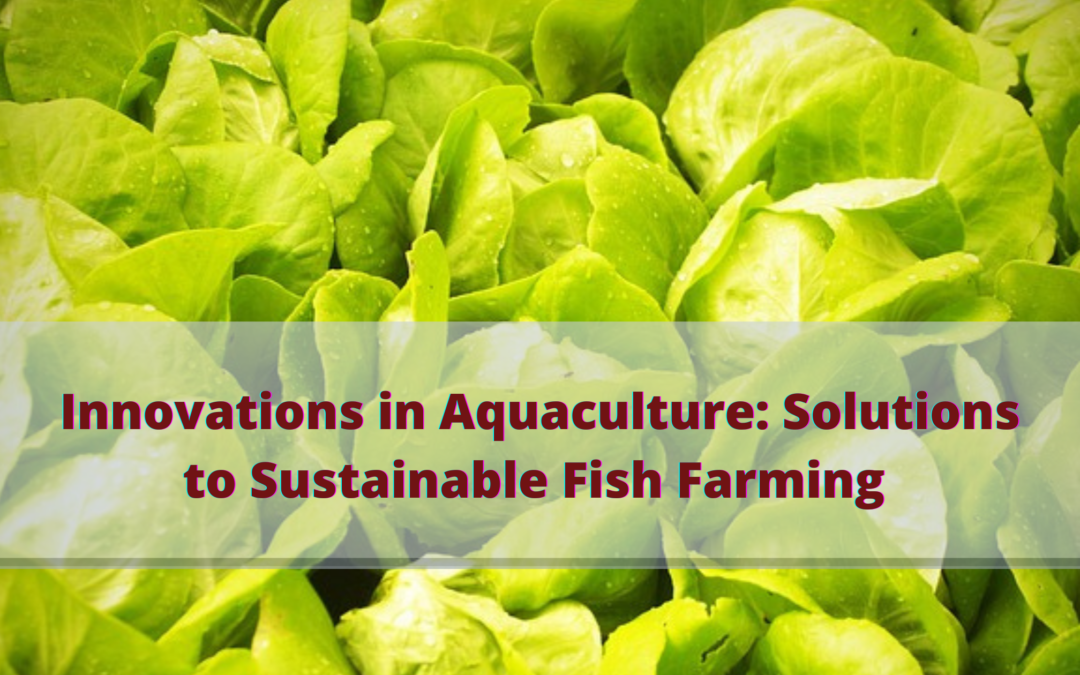The pace of innovation when it comes to raising marine species has greatly accelerated in recent years and that could be attributed to the increased use of modern technologies. Innovations in aquaculture come through in many ways such as through scientific research, novel materials, new technologies, and more. Many fish farmers and organizations are increasingly recognizing the potential of offshore aquaculture.
A report was written in 2019 by the Nature Conversancy and entitled Encourage Capital was done with the intention of sparking interest in greater investment into aquaculture. This was due to the fact that it’s one of the three systems that have the greatest potential for improved environmental sustainability and financial returns. As the global consumption of seafood increases, sustainable aquaculture has to be considered if production is to keep up with the pace of demand.
The growth of sustainable fish farming is imperative to easing off pressure from the wild fisheries populations. There have been concerns over the potential environmental implications that come with such an expansion. On the other hand, there has also been a lot of innovation and technology developed recently that are geared toward sustainability and longevity of the industry. Here are some of the latest innovations in aquaculture and solutions aimed towards the realization of sustainable fish farming.
Recirculation of Aquaculture Systems (RAS)
Shifting aquaculture farming inland into a land-based recirculating system is considered one of the best ways to reduce and also eliminate environmental impacts from fish farming. Recirculating aquaculture systems (RAS) is an innovative technology that helps with the creation of suitable aquatic conditions for aquaculture through the use of filters, pumps, aerators, and indoor tanks. The technology is designed to help attain 100 percent of water recycling within the system.
Land-based RAS is an innovation that’s extremely exciting and not just because of the reduction of the environmental effects, it also makes it possible for fish farming to be undertaken almost anywhere including the urban areas.

Utilization of Multi-Trophic Aquaculture
A great way that’s low cost and can help with reducing the build-up of nutrients is through the use of filter feeders. Multi-trophic aquaculture entails farming of a variety of species such as seaweed, shellfish, and carp alongside shrimp and salmon. As the byproducts get into the water, they become inputs for the filter feeders. This helps with reducing the build-up of the affluent and also improves the quality of water while also providing additional economic value to the fish farmers.
Investing in Renewable Energy Sources
As much as the cost benefits that come with renewable energy may seem marginal, the environmental friendliness of the practice and a positive shift in public perception with regard to the use of renewable energy can be beneficial to the industry. There is a range of renewable energy technologies that are getting into the aquaculture field such as the use of wind-powered water pumps, and solar-powered water heating systems, and there is likely to be continuity in the innovative solutions that might be more sophisticated.
The aquaculture industry is fast growing and evolving and having access to valuable knowledge can be of great benefit to the farmers. Get access to the latest innovative ideas that you can use to improve your aquaculture practice by joining a team of like-minded farmers.
P. S: – If you’d like to learn more, visit EAT Community for more information on fish farming.



